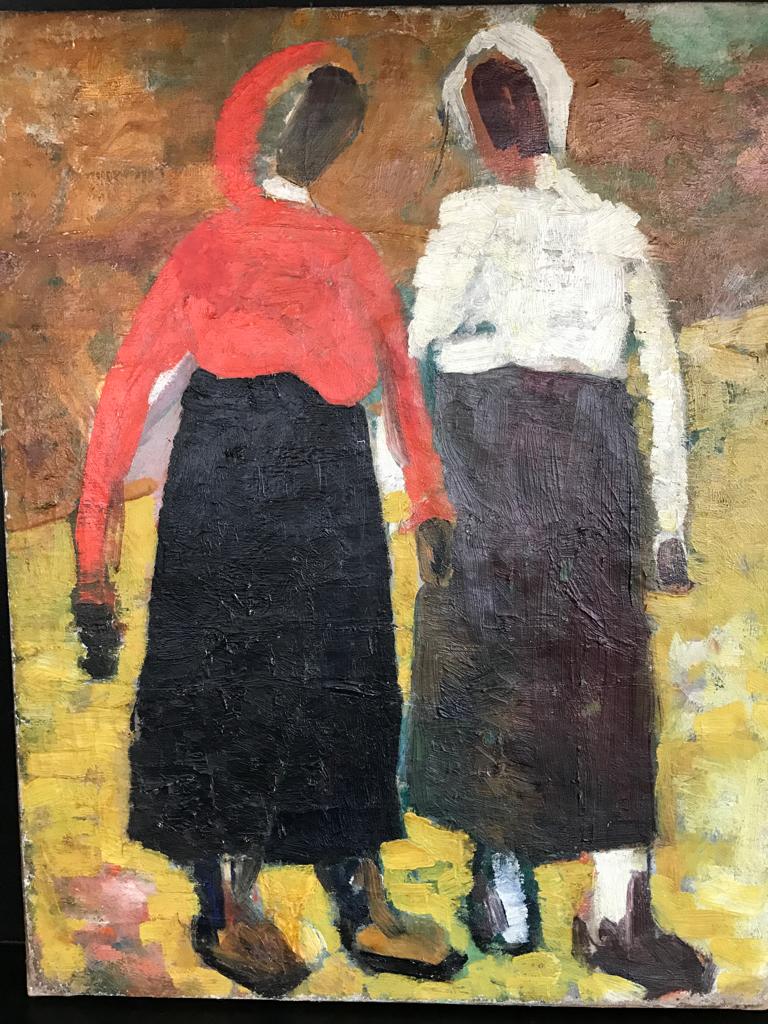Kazimir Malevich’s “Two Peasants” is a significant piece from his later period, showcasing his exploration of form and color within his distinctive style of Suprematism. Painted in 1929-1930, it reflects Malevich’s continued interest in geometric abstraction and the reduction of forms to their essential components.
In “Two Peasants,” Malevich presents two figures in a simplified, almost schematic manner. The figures are reduced to basic shapes and lines, emphasizing the geometric nature of his Suprematist style. The colors used are typically muted and limited, with emphasis on black, white, and shades of gray, enhancing the starkness of the composition.
Malevich’s motivations for painting such works during this period were likely multifaceted. As an artist deeply invested in exploring the fundamental principles of art, he sought to push the boundaries of expression and challenge traditional notions of representation. Suprematism, the movement he founded, aimed to move beyond the constraints of objective reality and tap into a more universal, spiritual realm through art.
During the late 1920s and early 1930s, Malevich faced increasing pressure from the Soviet government’s preference for Socialist Realism, which emphasized representational art with clear political or social messages. Despite this, Malevich remained committed to his abstract vision, although his later works, including “Two Peasants,” often contain more figurative elements compared to his earlier purely abstract compositions.
The painting is for sale. Contact us.

